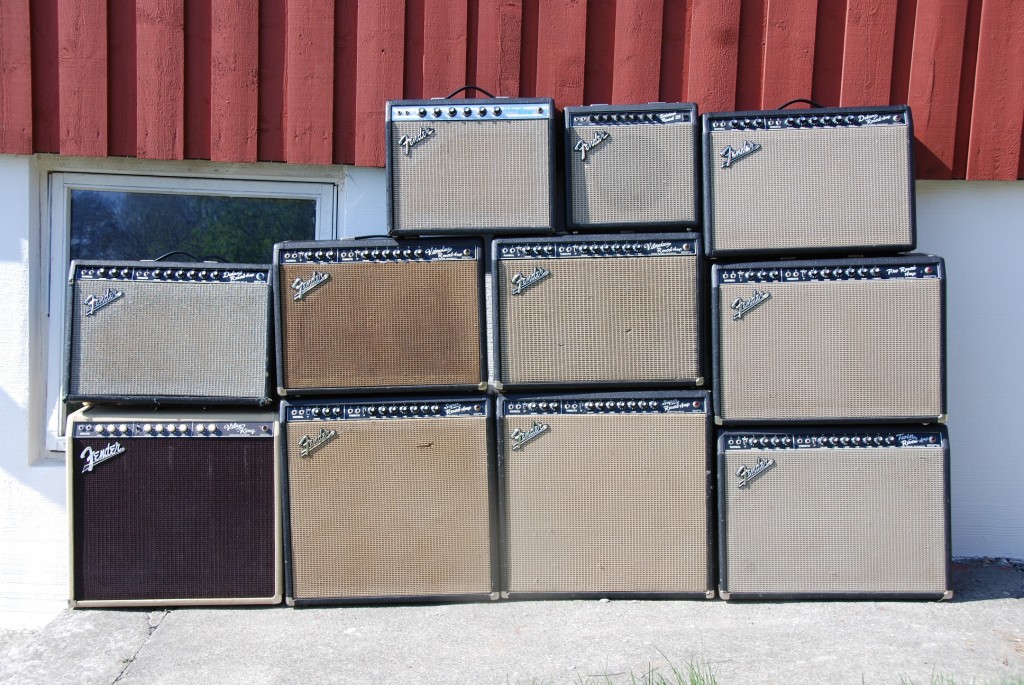See our amp section by clicking on a specific model in the amp menu. You will find information about most blackface and silverface models (1963 –>1979). We consider these amps the most versatile, robust and best sounding Fender amps. They are simple and basic point-to-point wired amps with built-in reverb and tremolo.
Picking the right tool for the job
I will share a story about drummers and guitar amps. I play most gigs with smaller amps such as Princeton Reverbs or Deluxe Reverbs, and most times I am able to crank these low wattage amps. Our usual drummer is a careful and steady drummer who does not play punk rock drummer-loud. He keeps the stage volume low and we love him for that. At one gig another guy stepped in for our usual drummer for a couple of songs. This second guy happens to be twice as loud and we couldn’t practically hear anything on stage except the snare and crash drums. Our Princeton Reverb amp was already set at volume 6 with no more headroom left and could not go further without delivering too much distortion and flabby bass.The stage sound was ruined and who knows how the music sounded through the PA. The poor Princeton Reverb even had an upgrade 10″ speaker but still couldn’t cut through the mix. The whole day after we regretted not bringing a Vibrolux or Pro Reverb. Or maybe a Deluxe Reverb with 6L6s and a loud 12″. A 1×12″ or 1×15″ extension cabinet for the Princeton Reverb could also have worked.
One amp to rule them all – modding your amp may be a good solution
We need our stuff to perform and adapt to varying environments for practice and gigs, outdoor, indoor, alone or in a band. Any tube amp player should be aware of the importance of finding an amp’s sweet spot to achieve sustaining harmonics, tube distortion, rectifier sag and transformer sag, aka. the tube amp mojo & magic. But then you have to turn your amp up. So how do you achieve all this with your specific amp not being too loud, too low, too muddy, too clean or too brittle? Ideally you should have several amps, different tools for different occasions. Or you need the knowledge to tweak your favorite amp to better suit your needs.
A general trend is to lower the clean headroom in large Fender amps to get earlier break up and sweet tube distortion at lower volumes. On the other hand, the smaller amps are usually tuned to increase the clean headroom to be used on small/medium sized gigs.
After performing modifications and trying them out for a while, you may find yourself reversing some mods, maybe even put the amp together to complete original spec. Was it worth it? Hell yeah. A good thing about modding is that you get to learn how amps work and are put together. You learn what it takes to tweak tone. Maybe more important – you learn what your own preferences are after having checked out a million different kinds of mods and resulting tones. You also experience that the tone you are seeking is a moving target. It changes as you develop new styles and preferences, as you get inspired by newly discovered guitar players, as man grows as a human being.
We have a special interest in mods that satisfy one or more of the following criterias:
- can be implemented and reversed in a short time (<30 mins) without ruining the value of the amp
- does not significantly change the key Fender tone of the amp
- switchable on/off

